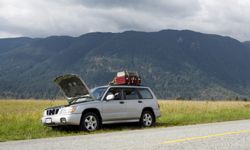The roads where I live handle a lot of agricultural traffic. Following a trailer off the pig farm is great the first few times ("Aww! Piggies!"), but pig trucks aren't known for their speed, and when you think about where those pigs are going, it's hard to feel right about squealing over how cute they are ("Aww! Pre-bacon!"). Passing the pig trucks, however, is tricky for me. Usually by the time my car realizes that I'd like it to increase its speed sometime this week, a chicken truck is barreling toward me in the passing lane. And since I don't want to play chicken with a chicken truck, I tuck back in behind the pig truck. Driving along in a cloud of Eau de Swine, I think about how I really need to improve my car's engine response.
Whether you're stuck behind a pig truck or just trying to jump off the line at a red light, improved engine response is a good thing. Before we get into how to get it, here's a tip: What most people call engine response, car geeks call throttle response. Why? Because engine response is how quickly the engine modulates its output when the driver increases or decreases pressure on the throttle. Engine responsiveness is how most of us think of it, but if you're talking cars with a snotty guy in a BMW jacket, calling it throttle response will save you from getting a lot of condensation thrown your way. Plus, it's more specific. Engines are complex pieces of machinery, and what we're talking about when we say engine response centers around systems directly related to the throttle. And, since you request and feel engine response through the accelerator (or throttle, if that guy in the BMW jacket is still hanging around), calling it throttle response keeps you focused on what you're asking your car to do, and how well it does it.
Advertisement


